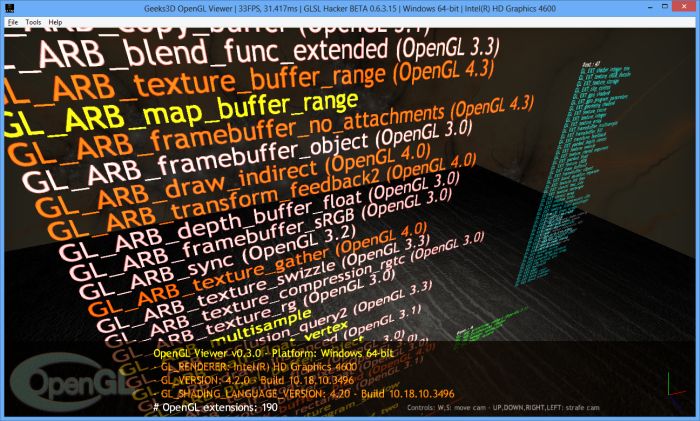

However, if I understand it correctly, writing a QGraphicsSystem extension which integrates Ogre into Qt (the other way round than Cutexture) would remove the ability to have Qt output applied as a texture to objects but with the advantage of having faster don't think Nokia would openly oppose iPhone development since if you write for Qt (even when targeting Qt on the iPhone), you would at the same time be writing something that could easily be released on a Nokia device as well. If someone has a better way to get Qt into Ogre, I'd be happy to hear it. If you have non-animated UIs, I believe this should be fast enough.

moving the mouse over a non-changing area causes no update). You are correct that updating a texture buffer can become a bottleneck, therefore the texture is only updated if there was a change in the UI (e.g.
#Opengl 4.7 download full
Thanks for the image rendered has 32bits, so you have full alpha channel support. It contains the GL ES 2.0 shaders, because GL ES 2 supports only GLSL (and not assembly shaders) - the shaders are much more readable, but note this remark at the end: Qt-everywhere-opensource-src-4.7.1\src\opengl\gl2paintengineex\qglengineshadersource_p.h Qt-everywhere-opensource-src-4.7.1\src\opengl\util\fragmentprograms_p.hĪnd sadly as assembler programs (meaning a hard time converting them back to CG\HLSL\GLSL) Qt-everywhere-opensource-src-4.7.1\src\opengl\qglpixelbuffer_win.cppĪll the GL shaders are in this file (158 fragment programs): Qt-everywhere-opensource-src-4.7.1\src\opengl\qpaintengine_opengl.cpp The files you should start from if you are interested in GL are:
#Opengl 4.7 download code
Implement a new QPaintEngine::OGRE, longer way to go - but with this method you will not be limited to OpenGL, meaning you can render QT on DX, you will only need to maintain one code base for all the render platforms (dx, gl, gles 1,2) and the code will less of a "hack". You can do the same for GL ES 1 and 2 if you are interested in mobile platforms.Ģ. An OpenGL only solution - meaning adding an option for the OpenGL QT renderer to get an external context (from OGRE) and then using the existing code to render to texture.

There are two main ways to go about this the "right way" as far as I can see:ġ. I think it can be done, your starting point in the QT source is this directory: qt-everywhere-opensource-src-4.7.1\src\opengl


 0 kommentar(er)
0 kommentar(er)
